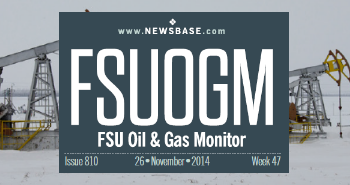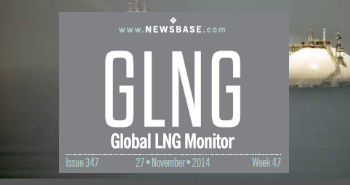Gazprom unveils its biggest investment programme in eight years as it begins to reorientate to the east

Gazprom announced a very large investment package for 2023 as it ramps up spending next year to RUB2.3 trillion ($35bn). The company is preparing to embark on major capital-intensive projects that may include new gas pipelines to China and suggests Gazprom may be expecting higher earnings from gas exports to Europe than analysts were expecting.
The new investment package marks a 15% year-on-year boost in the Russian state-owned gas supplier’s investment and was nearly 25% above the expectation of BCS Global Markets (BCS GM), the Moscow-based brokerage said in a research note.
“This unexpectedly large budget could reflect a larger-than-expected slate of inflexible projects (Power of Siberia 1, regional gasification, Baltic LNG, etc, which could be somewhat negative,” BCS GM said. “However, it could also represent a much more optimistic management assessment of the outlook for the European market – and this cash flows – than we are allowing for, which could be a neutral to positive signal.”
The gas pipeline Power of Siberia 1 is already pumping gas to China, but further investments are underway to link up the Kovyktinskoye gas field in the Irkutsk region to the pipeline, in order to ramp up supplies to an eventual 38bn cubic metres per year.
After Gazprom’s ability to export gas to Europe was seriously curtailed following the explosions that disabled the two Nord Stream gas pipelines in September, the company is looking to switch its gas distribution from west to east. The Yamal Europe pipeline that runs through Poland to German has also been taken offline earlier this year by sanctions.
Russia announced this week that talks with Beijing on building a Power of Siberia 2 pipeline are already “actively” underway and could carry 50bcm a year when completed in at least five year’s time.
The $13bn Baltic LNG project is due on stream within a few years, following a final investment decision (FID) taken in 2019. The complex in Ust-Luga – a joint venture between Gazprom and Rusgazdobycha – will handle 45 bcm per year of gas in total, producing, in addition, LNG and 19 bcm of gas ready for pipeline transport to Europe, although this part of the plan has likely been shelved. It will also produce 3.6mn tpy of ethane and 2.2mn tpy of LPG.
Some of these liquids will be used as feedstock at a nearby petrochemicals plant that Rusgazdobycha is developing on its own.
The company has also been instructed by the Russian government to accelerate the national gasification programme, to bring more pipeline gas supplies to households, businesses and industries.
The brokerage notes that given Gazprom’s hard dividend policy of 50% of adjusted net income, the capital expenditure should have no implications for shareholder rewards.
This represents Gazprom’s biggest capital spend since 2014.
“We had included an assumed decline to RUB1.85 trillion ($26bn) in our 2023e forecast, so this budget represents a material increase, both year on year and relative to our own assumptions,” BCS GM said. “The last time that Gazprom’s investments were higher was in the 2010-2014 period, when outlays averaged $51bn per year as the company completed a number of large pipeline projects and launched infrastructure and new fields on the Yamal Peninsula.”
The brokerage assumed a drop in investment next year in light of a substantial increase in the tax burden placed on Gazprom, which the Russian government recently approved to help shore up budget revenues, which have suffered as a result of Moscow’s war in Ukraine and Russia’s subsequent economic isolation by the West.
Russia’s finance ministry said in October 2022 Russia recorded a small budget surplus (RUB 74bn, or $1.2bn in dollar equivalent) thanks to an extra infusion of cash from a special tax on Gazprom (RUB416bn, or $6.9bn). The bottom line for the full year is still positive.
It also factors in that the pipeline linking the Kovyktinskoye field with the Power of Siberia system was completed in recent weeks.
“However, the need to ramp production at the Kovykta field in the next three years, and perhaps a requirement to install additional compressors on the pipeline as that happens, may be serving to keep investment in that project temporarily elevated,” BCS GM said. “Additionally, we think that investments at the Ust Luga gas processing project (also called the Baltic LNG project) may be accelerating faster than we had anticipated, and that the regional gasification programme, which has become a high-priority activity in the last couple of years, may be absorbing more money, as well.”
However, BCS GM cautions that Gazprom’s investment budget could imply an optimistic outlook on 2023 earnings.
“Gazprom’s traditional approach to investment forecasting in most years has been to set the initial budget no higher than a projection of available cash flows based on deliberately conservative forecasts of volumes and pricing,” BCS GM said. “Therefore, one interpretation of this budget is that management is substantially more optimistic than we are regarding the state of the company’s European gas export franchise.”
BCS GM assumes that Gazprom will export a mere 65 bcm of gas to Europe and Turkey next year, compared with an estimated 85 bcm in 2022 and 175 bcm in 2021. The brokerage projects that Gazprom will sell its gas in Europe on average at $1,035 per 1,000 cubic metres, including $300-350 per 1,000 cubic metres under oil price-linked contracts and a forecast $1,500 per 1,000 cubic metres according to gas hub-based pricing.
“We could be conservative on either or both, resulting in significantly higher revenues and available cash for investments,” BCS GM said. “If that is the case, and if management is right in this optimism, then the implication is that our dividend forecasts on 2023e results are also excessively low."
Without the Nord Stream pipelines the volumes of gas Russia can send to Europe has been greatly reduced but it still has several other pipelines that are still working.
The most important of those is the traditional route via Ukraine, which under the terms of a new deal signed in 2019 can carry 32bcm a year, but currently volumes have been halved from previous years.
There is also the Turk Stream gas pipeline that supplies southern Europe and came online in January 2020. Turk Stream has a nameplate capacity of 31.5bcm, but half of that volume is dedicated to supplying the Turkish market, leaving little for Europe. Another potential investment project is to build a second strand of Turk Stream to supply southern Europe.
Azerbaijan recently signed a deal with the EU to increase its gas deliveries to Europe from around 8bcm to 20bcm in the coming years. Last week Gazprom announced it was sending more gas to Azerbaijan that will free the country to send more gas to Europe.
|
Russia's gas pipelines to Europe by volume
|
|||
|
pipeline name |
volume (bcm/yr) |
commissioned |
route |
|
Nord Stream 1 |
55 |
2011 |
Russia-Baltic Sea - Germany |
|
Nord Stream 2 |
55 |
**2021 |
Russia-Baltic Sea - Germany |
|
Yamal-Europe |
33 |
2006 |
Russia-Belarus - Poland - Germany |
|
*Urengoy-Pomary-Uzhgorod |
32 |
1983 |
Russia – Ukraine - Slovakia |
|
TurkStream |
31.5 |
2020 |
Russia - Black Sea - Turkey |
|
*Torzhok-Smolensk-Mozyr-Dolyna |
30 |
1994 |
Russia - Belarus – Ukraine - Slovakia |
|
*Progress (Yamburg) |
26 |
1988 |
Russia - Ukraine - Slovakia |
|
*Soyuz |
26 |
1980 |
Russia – Kazakhstan – Ukraine - Slovakia |
|
Blue Stream |
16 |
2005 |
Russia - Black Sea - Turkey |
|
Source: Reuters, *part of Brotherhood pipeline **completed but network not commissioned |
|||




Follow us online